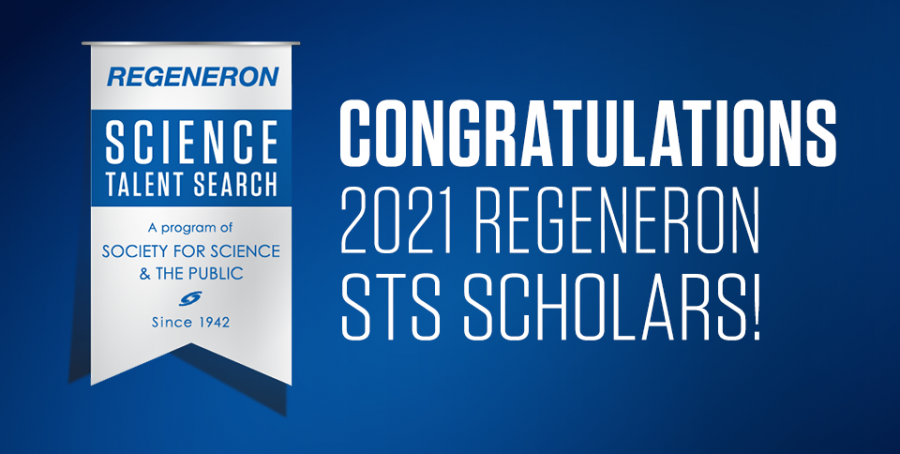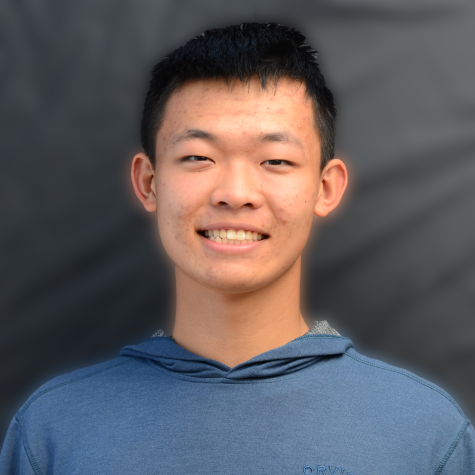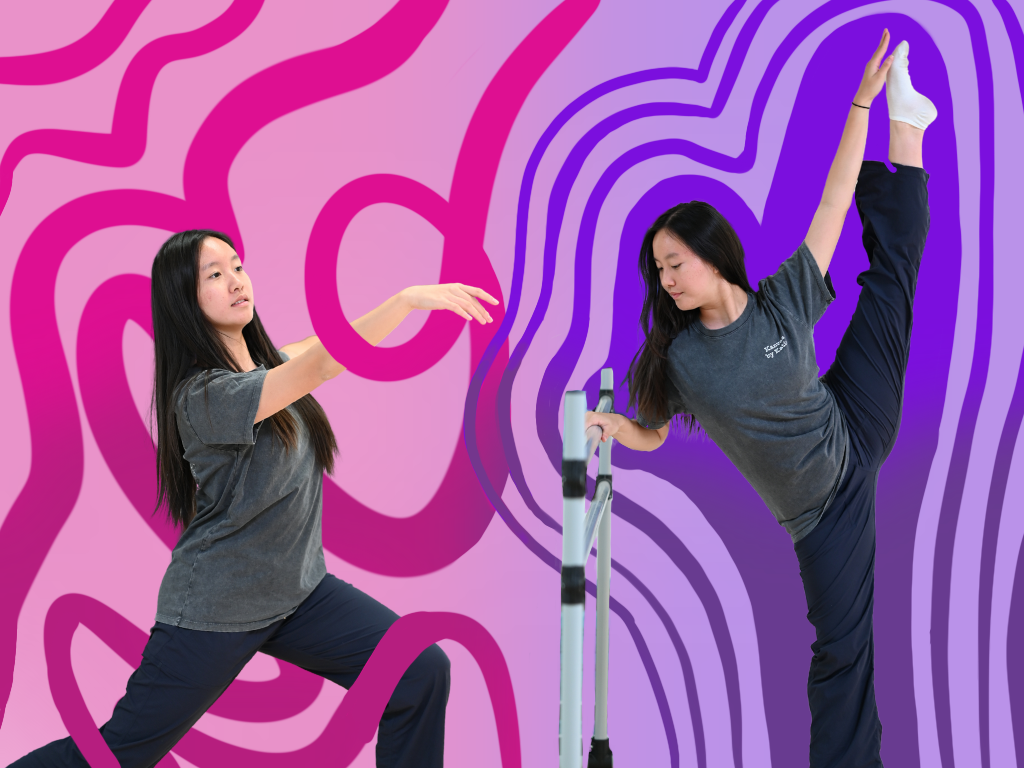4 seniors named as Regeneron scholars
Courtesy of the Society for Science
Seniors Shray Alag, Saloni Shah, Aditya Tadimenti and Sidra Xu were named Regeneron scholars in the Regeneron Science Talent Search (STS) as part of the top 300 scholars out of 1,760 applicants across 611 schools and 49 states.
January 10, 2021
Seniors Shray Alag, Saloni Shah, Aditya Tadimeti and Sidra Xu were named Regeneron scholars in the Regeneron Science Talent Search (STS) last week as part of the top 300 scholars out of 1,760 applicants across 611 schools and 49 states.
Each scholar and their school will receive $2,000 from the competition. Regeneron will name the top 40 finalists, who will compete for more than $1.8 million, on Jan. 21. Regeneron STS was founded in 1942 as a competition allowing high school seniors to submit their individual research in scientific fields of study. Contestants are judged on their research, academic achievements and promise as scientists. A full list of scholars can be found here.
Shray’s work examined 360,000 COVID-19 clinical trials using natural language processing to determine insights, such as disease to gene correlations, from those trials. His project was titled “Analysis of COVID-19 Clinical Trials: a Data-Driven, Ontology-based, Longitudinal, and Natural Language Processing Approach.”
“I wasn’t expecting it for sure, but I was really happy because it’s recognition that all your work pays off or has been seen as scientifically validated by some of the highest competition for research,” Shray said.
Saloni’s project, “Identifying Resilience Mutations in an Alzheimer’s Disease Whole-Genome Sequencing Cohort,” used various bio-computational tools to determine whether there were rare mutations in specific genes, and she identified eight genes that were significantly associated with Alzheimer’s.
“Being named a Regeneron semifinalist was validating to me, that the work that I’m doing is significant and important and that it can make a difference, and that other people can see that too,” Saloni said. “It was more of a joy that I could do these things rather than a joy that I was a semifinalist.”
Aditya’s research used machine learning to predict the size of wildfires based on factors such as meteorological variables, physical variables such as elevation and topography and socioeconomic variables at the fires’ start location. His project was titled “Machine Learning and Wildfire Burned Area: Examining Computational Techniques to Predict Fire Size for Practical Insights.”
“I was excited that I was recognized among other peers who have made key contributions to the scientific community,” Aditya said. “While being a semifinalist is great, I think that the greater value would be connecting with those other like-minded individuals because maybe in 10 or 15 years from now, we’d be changing the world in significant ways.”
Sidra’s project, titled “Application of Gene Embedding for Improved Somatic Mutation-Based Primary Cancer Typing and Biomarker Discovery,” focused on using a method from natural language processing called embedding to improve machine learning models to understand genes more deeply to classify different cancer types.
“It’s a great honor to be recognized among so many talented high school seniors in the nation,” Sidra said. “For my project to be considered among those 300, it validates a new scientific approach where scientists see not just biology, not just physics, not just chemistry as standalone disciplines, but rather as one whole unifying concept of science and multidisciplinary study.”


















![“[Building nerf blasters] became this outlet of creativity for me that hasn't been matched by anything else. The process [of] making a build complete to your desire is such a painstakingly difficult process, but I've had to learn from [the skills needed from] soldering to proper painting. There's so many different options for everything, if you think about it, it exists. The best part is [that] if it doesn't exist, you can build it yourself," Ishaan Parate said.](https://harkeraquila.com/wp-content/uploads/2022/08/DSC_8149-900x604.jpg)




![“When I came into high school, I was ready to be a follower. But DECA was a game changer for me. It helped me overcome my fear of public speaking, and it's played such a major role in who I've become today. To be able to successfully lead a chapter of 150 students, an officer team and be one of the upperclassmen I once really admired is something I'm [really] proud of,” Anvitha Tummala ('21) said.](https://harkeraquila.com/wp-content/uploads/2021/07/Screen-Shot-2021-07-25-at-9.50.05-AM-900x594.png)







![“I think getting up in the morning and having a sense of purpose [is exciting]. I think without a certain amount of drive, life is kind of obsolete and mundane, and I think having that every single day is what makes each day unique and kind of makes life exciting,” Neymika Jain (12) said.](https://harkeraquila.com/wp-content/uploads/2017/06/Screen-Shot-2017-06-03-at-4.54.16-PM.png)








![“My slogan is ‘slow feet, don’t eat, and I’m hungry.’ You need to run fast to get where you are–you aren't going to get those championships if you aren't fast,” Angel Cervantes (12) said. “I want to do well in school on my tests and in track and win championships for my team. I live by that, [and] I can do that anywhere: in the classroom or on the field.”](https://harkeraquila.com/wp-content/uploads/2018/06/DSC5146-900x601.jpg)
![“[Volleyball has] taught me how to fall correctly, and another thing it taught is that you don’t have to be the best at something to be good at it. If you just hit the ball in a smart way, then it still scores points and you’re good at it. You could be a background player and still make a much bigger impact on the team than you would think,” Anya Gert (’20) said.](https://harkeraquila.com/wp-content/uploads/2020/06/AnnaGert_JinTuan_HoHPhotoEdited-600x900.jpeg)

![“I'm not nearly there yet, but [my confidence has] definitely been getting better since I was pretty shy and timid coming into Harker my freshman year. I know that there's a lot of people that are really confident in what they do, and I really admire them. Everyone's so driven and that has really pushed me to kind of try to find my own place in high school and be more confident,” Alyssa Huang (’20) said.](https://harkeraquila.com/wp-content/uploads/2020/06/AlyssaHuang_EmilyChen_HoHPhoto-900x749.jpeg)











